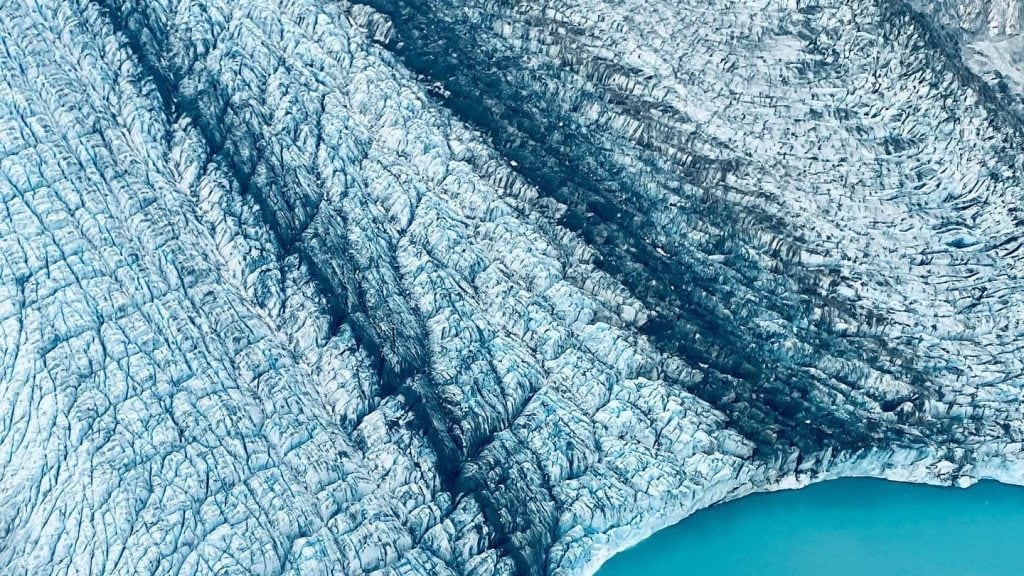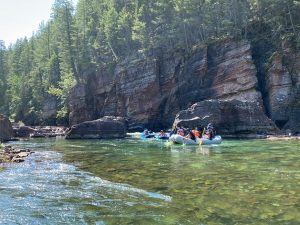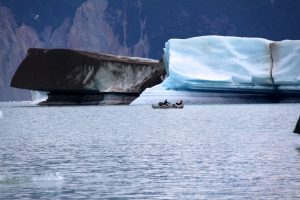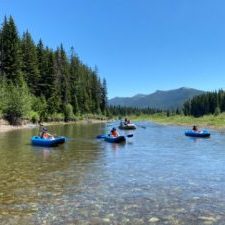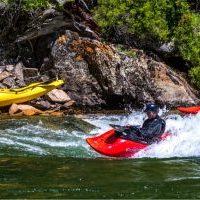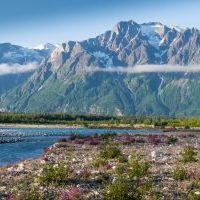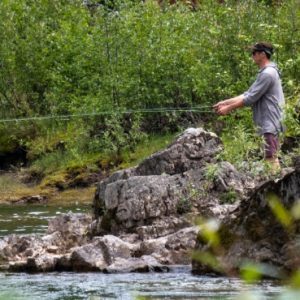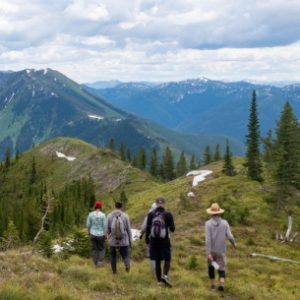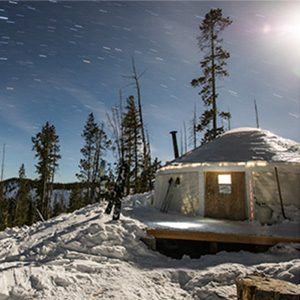First Times: Life Lessons From the Upper Alsek
October 27, 2022
Written by Carly Knudson
As I checked my boat’s rig for the fourth time over, I tried to calm my breathing amidst the ominous roaring in the background, reminding me of what was to come. It was the biggest rapid I had ever run, though I was adamant not to admit it when the guests asked me if that was the case. Seth was still downriver scouting the rapid, talking over with the rest of the crew as to what the game plan was going to be. I knew what I thought the game plan was supposed to be, but after over a decade of running rivers, I knew one thing for certain: that sometimes you need to have a plan A, B, C, D, E… It wasn’t that I was doubting my river running competency, but it was the sheer magnitude of the situation that kept me on edge. Matthew was beside me on his boat, putting on his drysuit. I was trying not to make eye contact to avoid confronting how nervous I felt that I looked. I was ensuring every piece of gear had multiple strap points on it; tightening my frame down; reviewing that my oar leashes were properly tied; stowing away my loose cockpit items; replacing the weight of where my guests had been sitting with gear bags. We decided to have everyone but the guides walk around the massive rapid, and we instructed one person to sit at the entrance, using their bright orange PFD and neon yellow rubber rain suit as a marker of where we needed to make our big initial move.
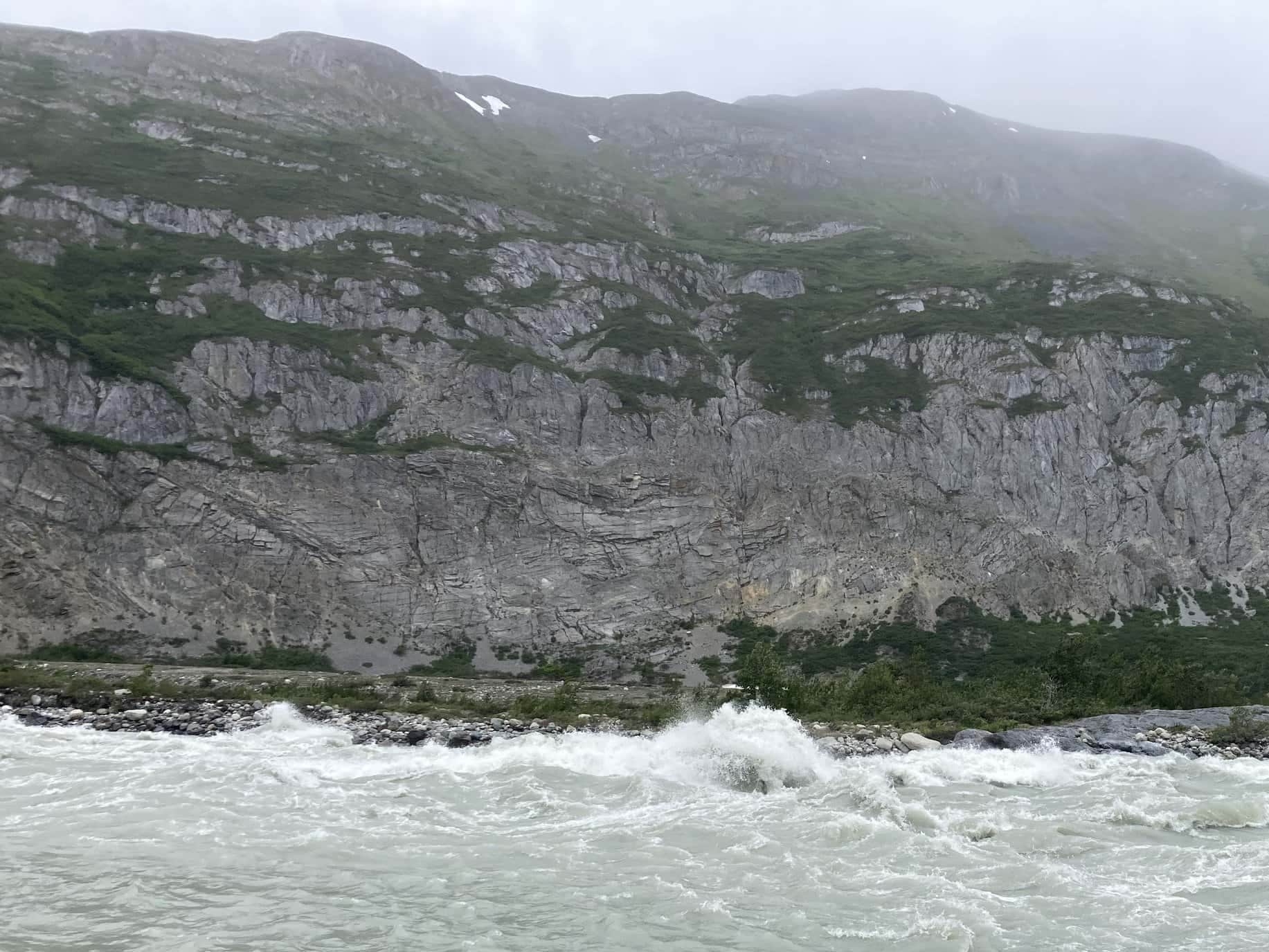
Though I had visualized the line that I wanted to make, it was difficult to see beyond the house-sized holes peppering the river amongst breaking waves that seemed more fitting for an ocean than a river. It’s extremely easy to lose your sense of spatial awareness in that big of water, and without ever directly acknowledging it, with a river full of unforgiving hydraulics moving at about 50,000 cfs at a temperature of glacial ice water, I knew that this was a situation where there was little-to-no room for mistakes.
The three of us looked at each other once it seemed like we were all done fidgeting with our boats and I had finished duct taping my blown-out wrist gaskets. Seth flashed me a knowing smile, and I took one last deep breath as I pushed off into Lava North.
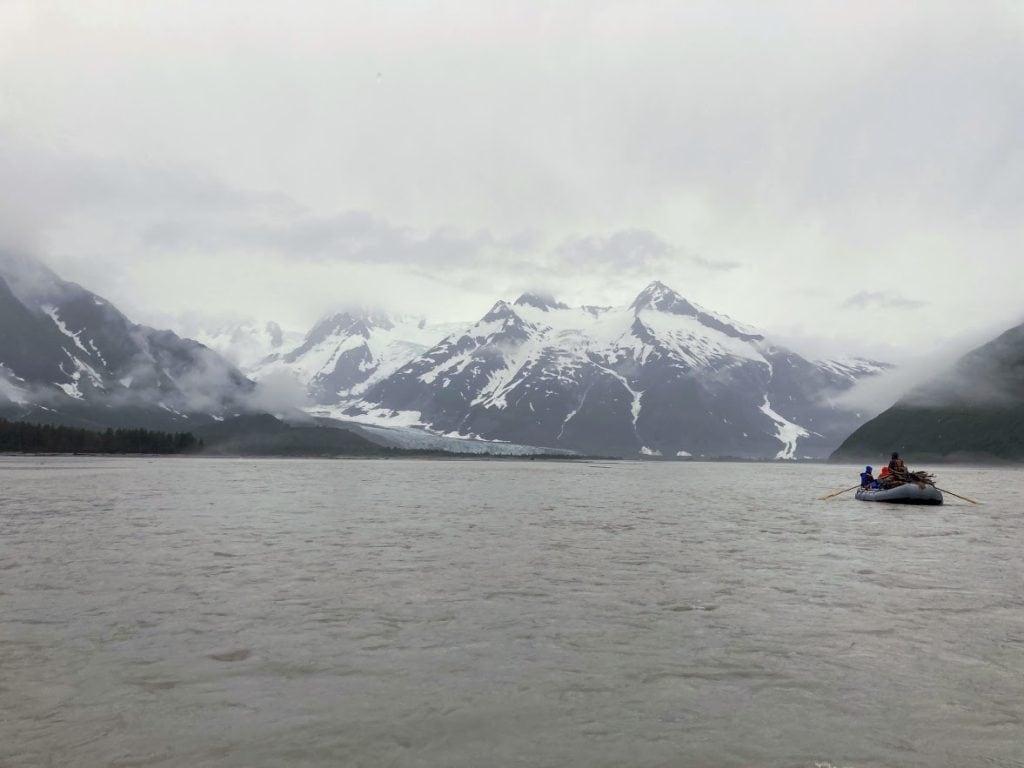
The Upper Alsek River is a place of reverence and lore throughout the river community. The river cuts through the largest protected wilderness complex in the world, and is about as close to experiencing a modern ice age as a person can get. Everything from the scenery to the whitewater to the wildlife and the weather is extravagant and extreme, with every day leaving you a little more flabbergasted than the last. There is only one launch every three days, so you are almost guaranteed to see more grizzly bears than people. Though you certainly won’t hear the Upper Alsek talked about in everyday conversation as frequently as some multi-day trips such as the Grand Canyon or the Middle Fork Salmon, there is an unparalleled humility and respect from those who do know the legends of the Alsek. Within our company, there is a sense of “making it” in the guiding world once you get invited to work up in Alaska. So from the initial phone call I received from Seth asking if I wanted to go and guide up there this season, to the plane ride, ferry ride, and up until we had launched the boats, I actively tried to ignore my imposter syndrome-prone brain that whispered, “You sure you got the right gal?”
If there is another thing I have learned while guiding, and especially on this particular expedition, it’s that you have to become comfortable with the motto of: “Adapt and overcome.” I remembered this mantra very quickly when on our drive in, we hadn’t even made it a half of a mile past the standard put-in road when it was discovered that the road had flooded and was impassable. The alternative was to backtrack to Haines Junction to have to put in 10 miles earlier than we had planned on the Dezadeash River, which joins the Kaskawulsh to form the beginnings of the mighty Upper Alsek. While 10 miles doesn’t seem like much extra ground to cover, in the land where Mother Nature rules, one’s first mistake is making assumptions. The Dezadeash River (which kind of feels more like a lake than a downstream-moving body of water) is notorious for its ruthless headwinds, and the only other parties we had heard talk about completing the Dezadeash section all spoke of brutal delays and gut-wrenching rowing. Starting one or two days behind could cause us serious logistic problems down the road, as the Alsek is unlike other rivers we run in the sense that instead of set launch days, we have a set takeout day.
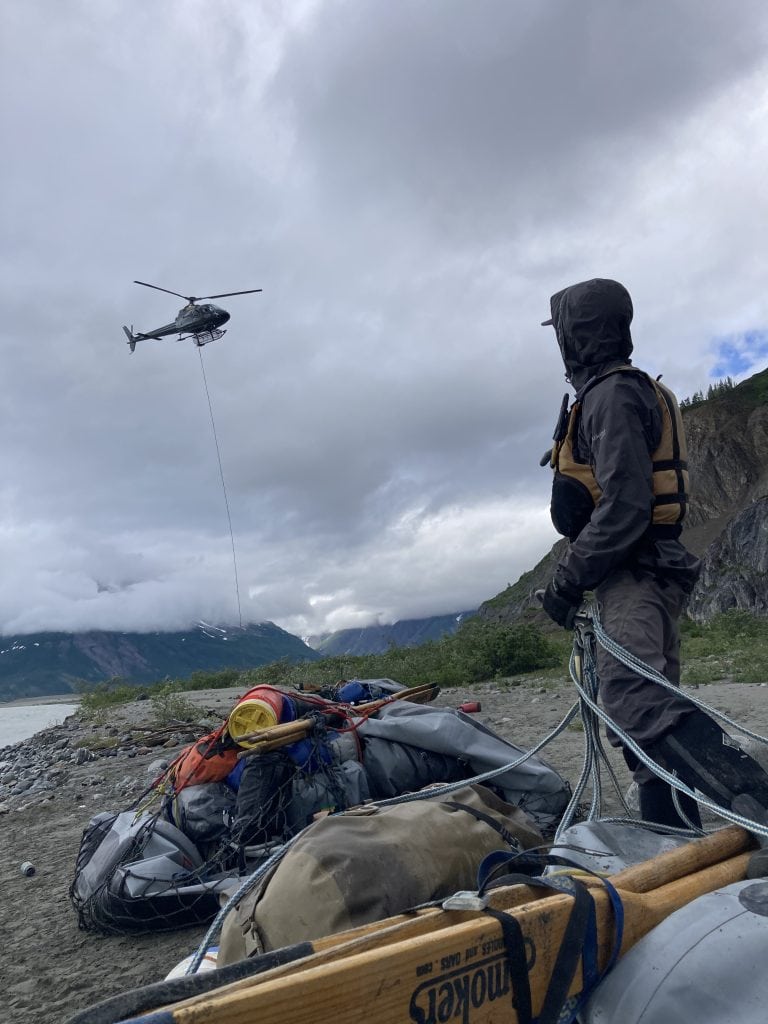
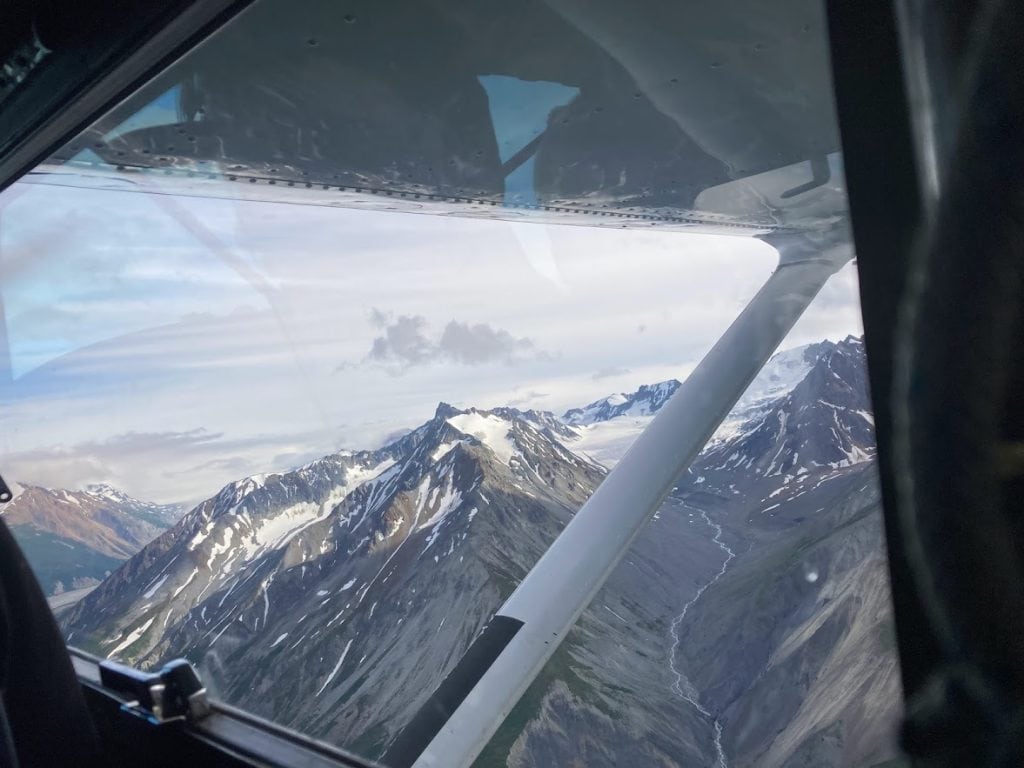
Not only does the National Park Service require us to be out of the park on our designated date, but we had helicopter flights, ATV shuttles, and Alaskan bush pilot logistics all relying on our ability to be at the correct spot at the right time. As we pushed off on our expedition, wind levels were low, but there was certainly a sense of urgency to make it as far as we possibly could before it inevitably began and impeded our progress. Thankfully, the “W” word was fairly kind to us most of the afternoon, which allowed for us to take in the magnificence of the striking Alaskan peaks contrasting against vast glacial gray-blue water. The epic scenery and typical first-day small talk kept my boat occupied for quite some time, but not long enough to avoid the inevitable question that I was wondering how long I could avoid: “So how many times have you been up here?”
My stomach dropped. My secret was bound to be leaked at one point or another over the next twelve days, and I questioned whether or not I wanted to just fess up on my own terms or let it slip out in some other accidental, clunky way. While all year I had been studying maps, guide books, reading up on local ecology, geography, geology, and history, and felt completely solid in my river running and boat handling skills, there is still a pretty daunting feeling of trying to establish confidence and trust as a guide when you have never seen a place. I thought about the pros and cons of fibbing to my guests, and what it could do to the rapport between us if the secret slipped. I would have to make Matthew and Seth my accomplices, and come up with some crazy, too-detailed stories of the “last time I was there”. I would have to act like I wasn’t shocked the first time I saw my first real glacier, and come up with some sort of believable answer anytime anyone wanted to know what was around the corner. Pretty quickly, I realized how many potential holes in my story I would inevitably have, so I decided to be honest and explain the situation.
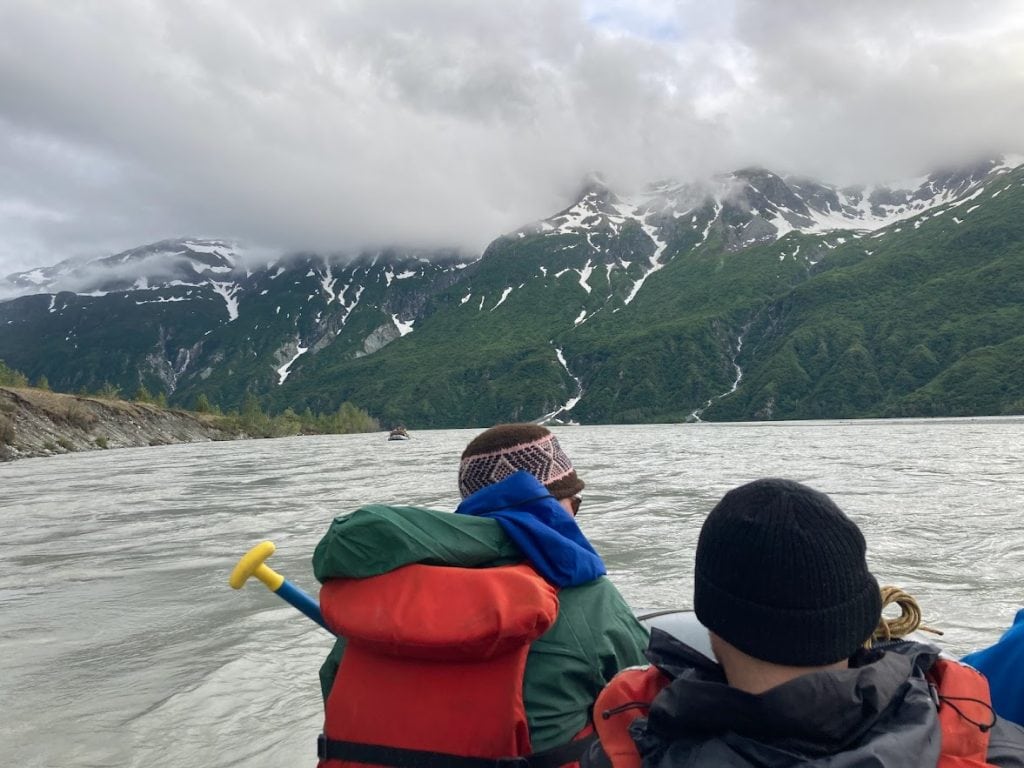
After carrying on for a bit about the Park Service and company logistics and trying to assert my river running background, I realized how dry and methodical my response sounded, and like I was trying to cover my tracks. I also noticed the disconnect between how incomprehensibly excited I felt about being there versus how I was panic-explaining how I got to be there. I didn’t really know what I was about to say or where it was going to go when I just started spewing:
“Honestly, I’m kind of glad I’ve never been here before.” I could tell the guests in my boat became interested in what I had to say again.
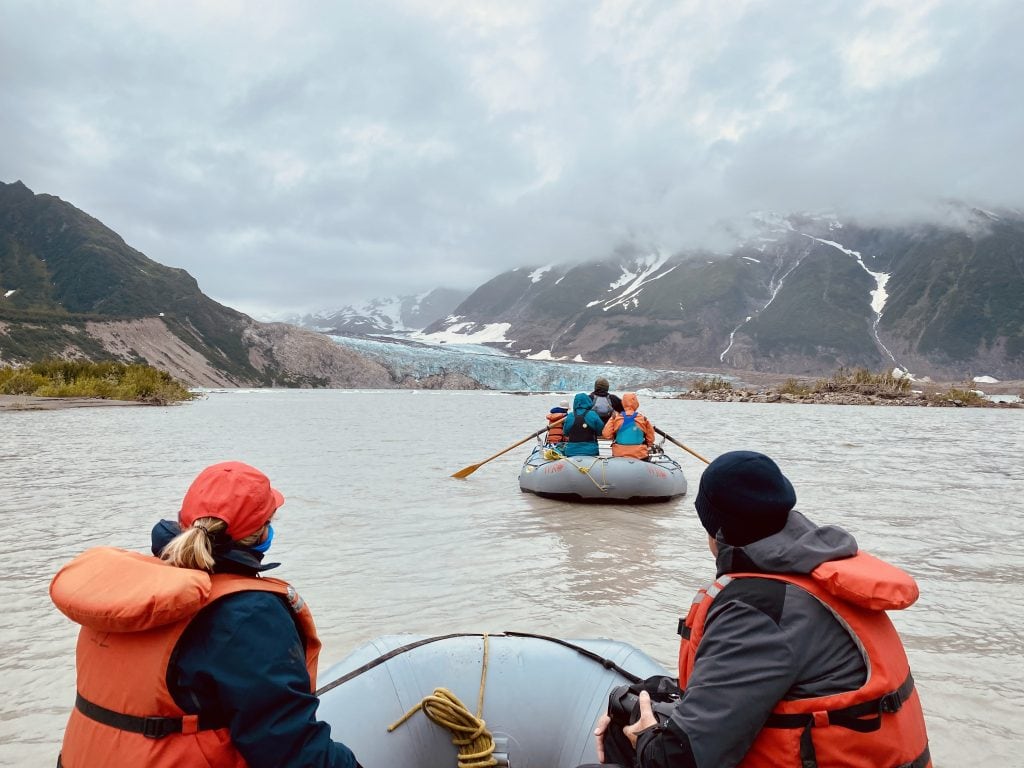
“There are very few times in our lives anymore that we get to experience a place like this for the very first time. Even though I know I work in some of the most amazing places in the world all summer and grant people that experience, it’s easy to forget what it’s like to not know what’s around the next corner, or to not know what something is, or to be shocked by something you didn’t expect. There’s a shift to acceptance that you probably won’t always be in control of what situations we will encounter, and being in an environment that is new to us. And it’s a return to the sense of adventure and real expedition that we’re inevitably in together that I really have been missing about guiding lately. So thank you for being a part of it, willingly or unwillingly.”
The guests turned around and smiled at me, and we all unspokenly agreed that we liked that answer better.
The Upper Alsek was one of the most inspiring and difficult trips I have ever guided. Every day was a constant reminder of the power of Mother Nature and what a true expedition feels like.
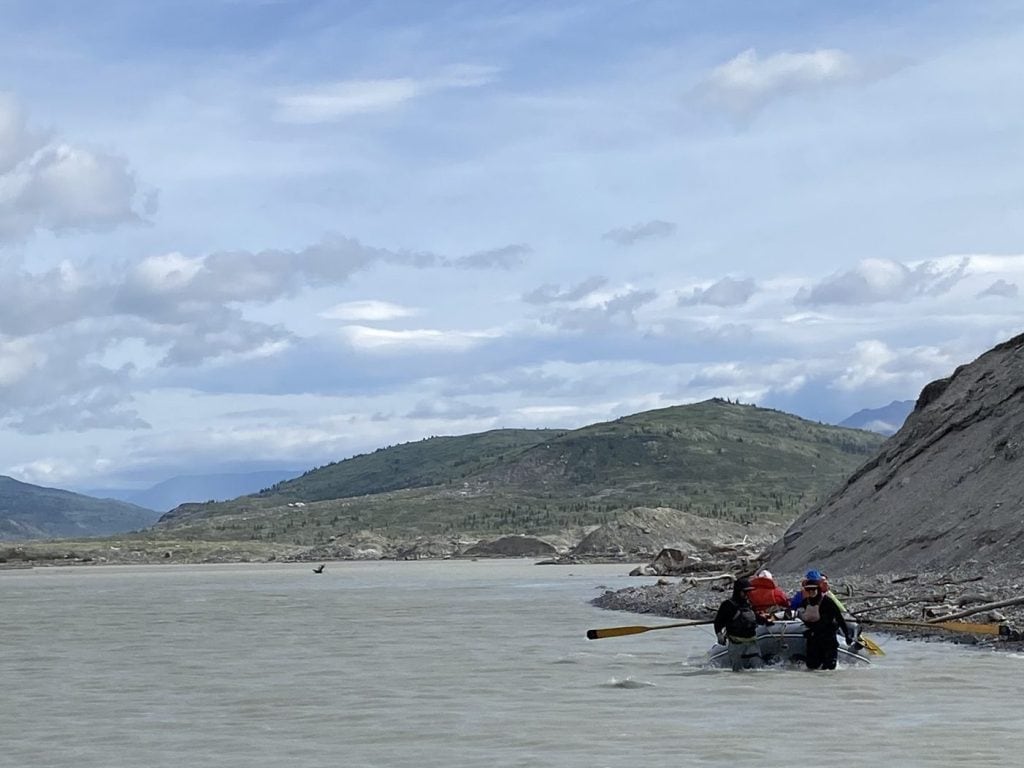

Along with our delay on the Dezadeash, we encountered some long, cold, and wet days, fire bans, a two-day 50 mile an hour wind pin-down at Lowell Glacier in which we had to essentially drag our rafts across three miles of upstream breaking waves to get out (Seth wanted me to point out this was after a perfectly gorgeous day of doing one of the most epic hikes I’ve ever done in my life to Goatherd Mountain- which is true), a Turnback Canyon helicopter portage adventure in which we were dropped three miles earlier than we had planned, dishes in the dark (which in Alaska in the summer is pretty difficult to accomplish), getting gear abandoned at Dry Bay due to flying conditions, and facing what 12 days of mild suffering can potentially do to one’s psyche.
It would be lying to tell someone interested in doing the Upper Alsek that it’s going to be rainbows and wildflowers and sunshine and northern lights all the time; but for all of the difficult moments, there were a thousand reasons as to why the challenges and discomforts are worth it.
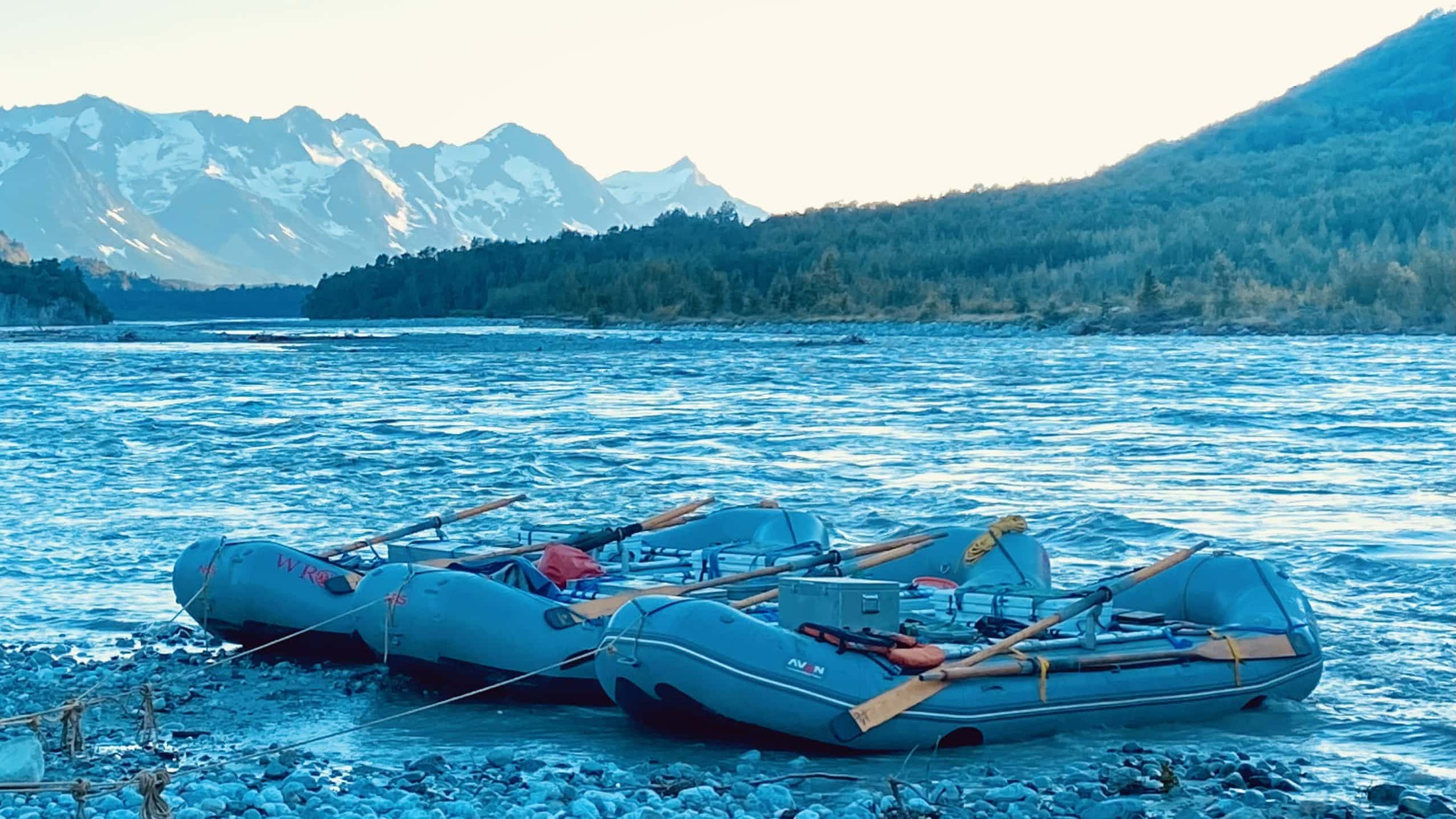
The utter scale and majesty of the Alsek River and glacial landscape demand attention and respect, and is a constant reminder of our insignificance in the best way possible. The expanses of ice-blue water against striking peaks is utterly jaw dropping, and the peppering of light pink River Beauty flowers amongst the massive scenery stress the importance of delicacy in our lives. You learn about the pioneering Arctic Dryas plants that scatter the landscape, with their white, fluffy, Troll hair-like tops a reminder of resilience and perseverance in a harsh glacial landscape. You hear the unmistakable roaring of glacial cracking and iceberg calving that makes you stop dead in your tracks and actually pay attention. Seemingly misplaced expanses of white sand dunes make you question what you thought you knew about logical geography. Greetings by grizzlies worthy of their great Alaskan reputation, moose tracks preserved all along the silt shores, Arctic terns performing aerial tricks, and a sly Gray wolf following the banks of the river demand the recognition that there many great beings co-existing and relying on this special place as their home. The isolation can be eerie at times, but mostly it grants an opportunity to meditate on a type of solitude and reflection that is near impossible to find in everyday life anymore.
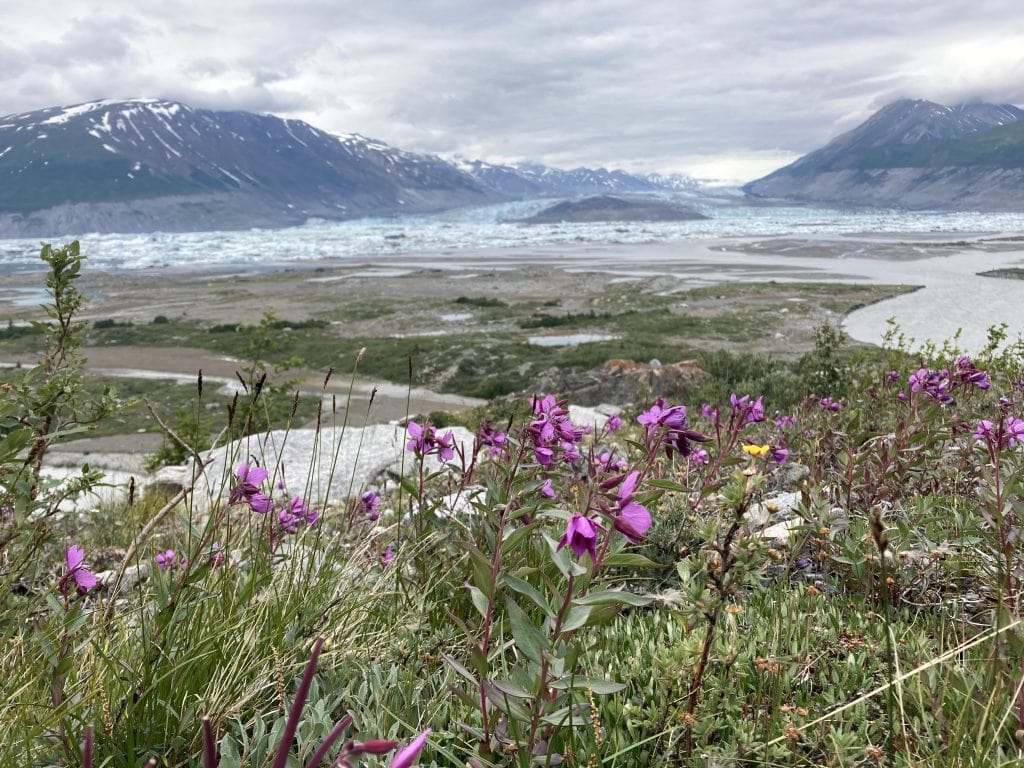
You can only experience your first time down a place like the Alsek once, and it is a time in my life I would never trade for anything. It reminded me why I do what I do, and why I continue to revolve so much of my life around guiding and granting others the opportunity to see wild landscapes for their first times. It reminded me of the importance of awe and wonder and excitement, and why these places are so important to preserve and protect. It reminded me of the feelings of sheer joy you get when you nail your line down a rapid as intimidating as Lava North, or the kind of pride and feat in using all your human strength possible to finally get out of a lake you thought you would never escape. I think about Joe’s first adventure down the Alsek in the early 1970’s after he was advised by the infamous Walt Blackadar to never attempt it in a raft, and his assertions that it was a necessary place for others to experience. I think about Seth and Amy coming down as kids, and what this magnitude of a trip would feel like at their age. I think about the threatened habitats and icefields with warming temperatures, and what this river will look like in 10, 20, 50 years. I hope that for every river runner, outdoors-person, environmentalist, or lover of wild things that you get to experience the magnificence of the Upper Alsek, and continue to advocate for the places like it, so future generations can continue to experience their first times, too.
